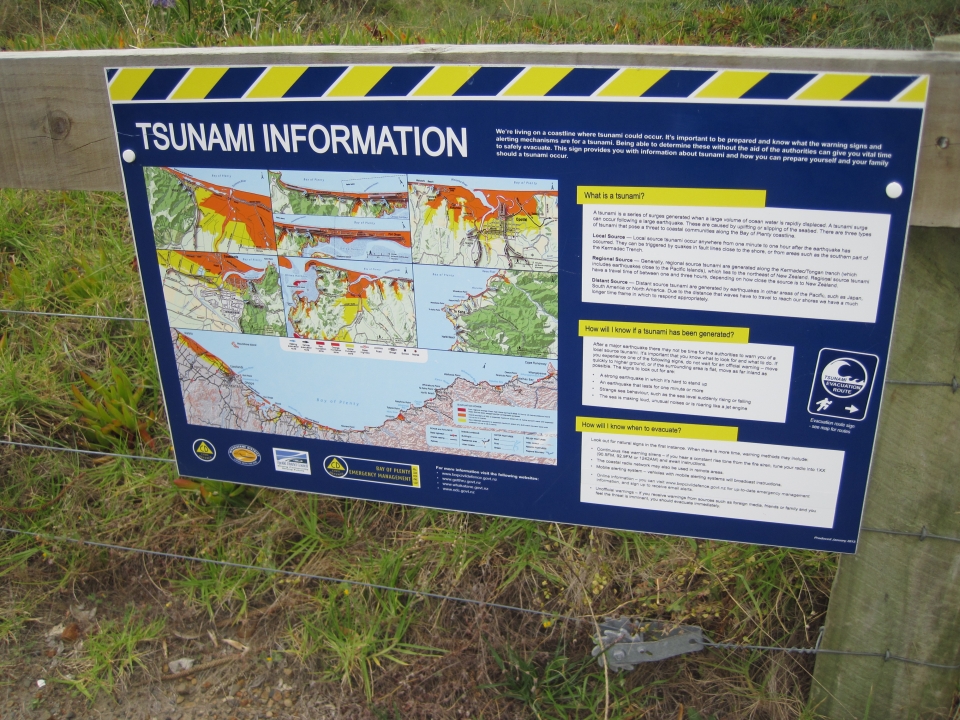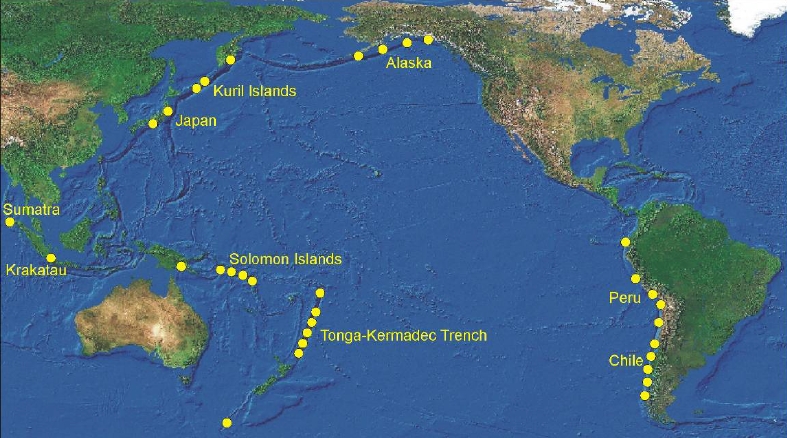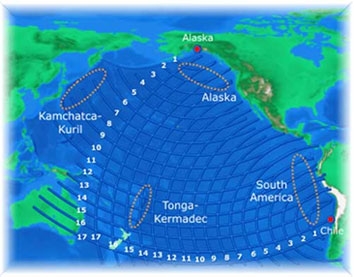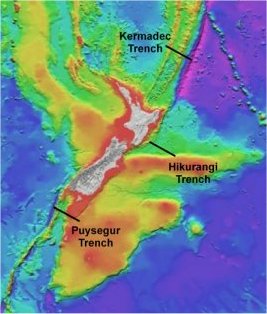You can contact LEARNZ, part of CORE Education, at:
Postal Address:
PO Box 13 678,
Christchurch 8141,
New Zealand
New Zealand has had tsunami in the past so people need to know what to do.
In New Zealand there have been about 10 tsunami higher than 5 metres since 1840. Some were caused by earthquakes that happened a long way away, but most were from seafloor earthquakes closer to New Zealand.
A nearby coastal seafloor earthquake is the only warning people may get before a tsunami arrives. Such a tsunami can arrive within minutes - before there is time to give a warning.
Very large far off earthquakes give more warning time. Some tsunamis are foaming walls of water filled with debris and sand that crash ashore and sweep inland. Others are just quickly rising or falling water levels over minutes or an hour. Both are dangerous. Both can travel over land at speeds faster than a person can run.
The risk of tsunami in the Pacific Ocean is higher than for other oceans because of the Pacific Plate boundary or ‘Ring of Fire’. This zone has lots of earthquakes because of the movement of the tectonic plates. New Zealand is therefore at risk of tsunami.
Tsunami can come from close or far off sources. If a tsunami is formed close to land then there may be very little warning. Tsunami formed by local earthquakes can reach the nearest coast before scientists can work out the location of the earthquake and issue a warning or start tsunami sirens. A strong earthquake may be the only warning of a tsunami.
If an earthquake lasts for more than a minute or is strong enough that it is difficult to stand then you need to move quickly to higher ground. If you are at the beach and notice the sea suddenly recedes you also need to move to higher ground.
For tsunamis caused by far off earthquakes such as in South America, there will be warnings. Tsunamis from South America, Alaska and Japan take more than 12 hours to reach New Zealand.
If you are near a beach and feel a strong earthquake or notice the sea receding unusually, quickly move to higher ground (you may have only a few minutes).
Take yourself and others to higher ground - at least 35m above sea level is best.
Turn your radio on and follow instructions.

,Many people live close to the coast and need to know what to do if there is a tsunami. What warning will people get that a tsunami is coming? Image: LEARNZ.

,New Zealand is at risk of local tsunami and tsunami from a long way away. This map shows far off sources of tsunami for New Zealand. Can you find out where the last tsunami that hit New Zealand came from? Image: GNS Science.

,Long distance tsunamis can be large events but there will be several hours warning. This map shows how long it could take for waves to reach New Zealand. What is your emergency plan if there is a tsunami near you? Image: Christchurch City Council.

The main sources of locally generated tsunamis are from earthquakes in the Kermadec Trench, Hikurangi Trench or Puysegur Trench. Why do you think these areas are of greater risk than some other closer off-shore faults? Image: GNS Science.
Design and complete a poster to tell people what to do if there is a tsunami.